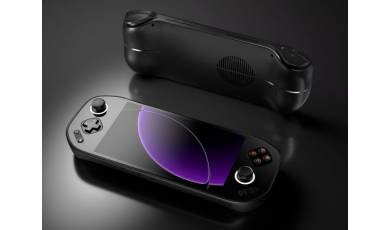Flash firmware on Samsung Galaxy F03
Mobiles >> Samsung >> Samsung Galaxy F03| Specifications | Reviews | Secret codes |
| Unlock phone | Root phone | Bypass FRP |
| Backup | Flash Firmware | Screenshot |
How to flash Samsung Galaxy F03?
Why reinstall the firmware?
The operating system keeps getting errors.
Some applications do not open, reinstalling which does not lead to a positive result.
Many programs from the Play Market do not start.
The phone turns off for no apparent reason.
The phone is slow.
You want to update the firmware, as it does not suit you in terms of functionality.
Where can I find the firmware?
On the website of your phone manufacturer.
On specialized services on which developers lay out custom or official OS.
What should be done before installing the firmware?
Back up your contacts and user data and transfer it to your computer.
Insert your SD card into your phone. It must have enough memory to fit the firmware.
Determine your smartphone model.
Fully charge your device.
Download the archive with Firmware and place it on the SD card.
Installing TWRP Recovery
Install the Official TWRP App via the Play Market. And run this application.
When you start the application for the first time, you must consent to future manipulations, as well as consent to granting the application Superuser rights. Check the checkboxes and press the 'OK' button.
On the next screen, you need to select the 'TWRP FLASH' item and give the application root-rights.

On the main screen of the application, click 'Select Device', and find your phone model.
After selecting a phone, the application will direct the user to a web page to download the modified recovery environment image file. Download the proposed *.img file.
When the file is loaded, return to the main screen of the Official TWRP App and press the 'Select a file to flash' button. Select the file downloaded in the previous step.
Now press the 'FLASH TO RECOVERY' button and confirm your choice, press 'OK'.
After the burn process is complete, the message 'Flash Completed Succsessfuly!' appears. Click 'OK'. The TWRP installation procedure can be considered complete..
Write the firmware and other necessary files to the SD card. Using a PC or laptop card reader, it will be much faster.
Insert a memory card into the device.
To reboot into recovery, you need to enter the menu accessible by pressing the button with three stripes in the upper left corner of the main screen of the application. Select the 'Reboot' item, and then click on the 'REBOOT RECOVERY' button. The phone will reboot into the recovery environment automatically..
Firmware via TWRP

Before flashing, you need to clear the 'Cache' and 'Data' sections, press 'WIPE' on the main screen. This will delete all user data from the device, but avoid a wide range of software errors and other problems.
You can start flashing. Click the 'Install' button.

The file selection screen is displayed. At the very top is the 'Storage' button, which allows you to switch between types of memory.
Select the location where you copied the files. Press the 'OK' button.

Select the firmware file and click on it. A screen opens with a warning about possible negative consequences, you need to check the item 'Zip signature verification', which will avoid using damaged files during recording.
The procedure for writing files to the device's memory will begin, accompanied by the appearance of inscriptions in the log field and the completion of the progress bar.
When the procedure for installing the firmware is completed, the message 'Successful' appears on the screen.
Summary: OS: Android v10 (Q); Screen Resolution: 720 x 1600 Pixels; Screen type: Super AMOLED; Pixel density: 280 ppi; Aspect ratio: 19.5:9; Touch screen: Yes, Capacitive Touchscreen, Multi-touch; Internal memory: 64 GB; Front camera: 12 MP; Front camera: 12 MP Primary Camera; Main camera: 16 MP 5 MP 2 MP; Resolution: 16 MP, f/2.2, 25mm , 1/3.06", 1.12Вµm, PDAF, 5 MP, f/2.4, , 2 MP, f/2.4,; Camera setup: Single; Flash: Yes, LED Flash; Autofocus: Yes; Shooting modes: Continuos Shooting, High Dynamic Range mode (HDR); Video recording: Yes; Settings: Exposure compensation, ISO control; Camera features: Digital Zoom, Auto Flash, Face detection, Touch to focus; Sim 1: 4G Bands: TD-LTE 2300(band 40), ...
Comments, questions and answers on the flash firmware Samsung Galaxy F03
Ask a question about Samsung Galaxy F03




